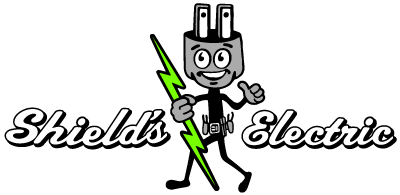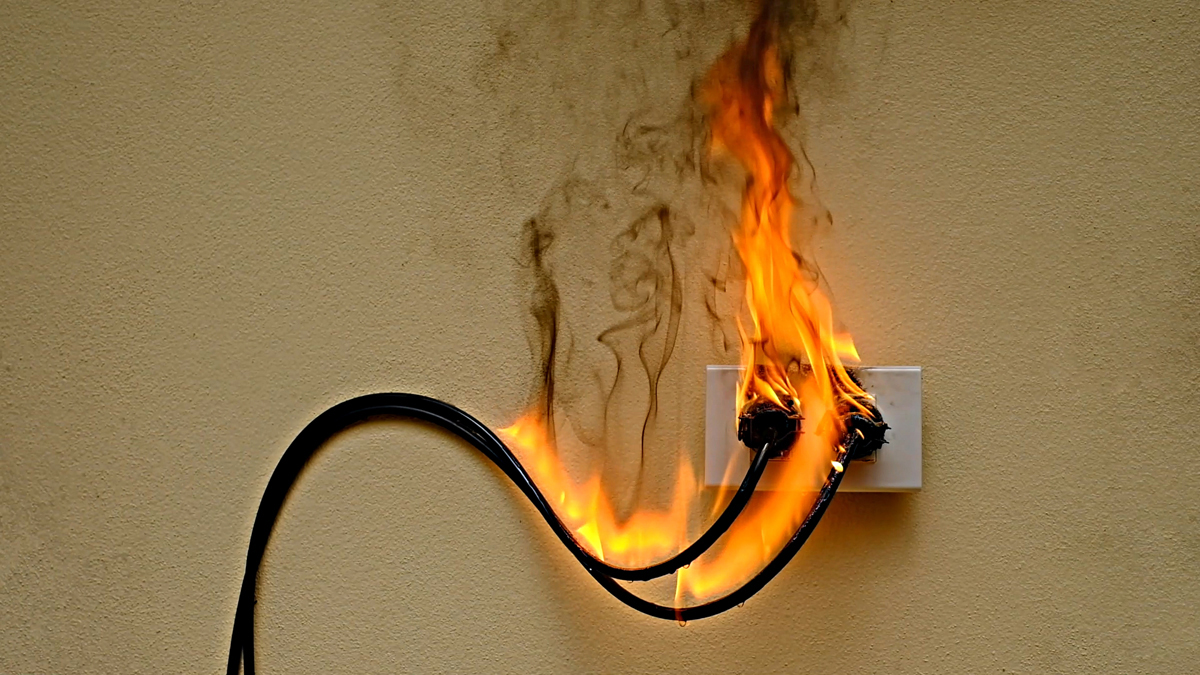While electricity undoubtedly makes our lives easier and more comfortable, it also comes with residential risks. All homeowners need to know the warning signs of a potential electrical fire.
Common Causes Of An Electrical Fire
Knowing the potential causes of an electrical fire can help you avoid disaster at home. Common factors contributing to residential electrical fires include:
- Lack of maintenance.
- Overloaded circuits.
- Outdated wiring.
- Ignoring safety codes.
- Old or faulty outlets and appliances.
- Misuse of extension cords.
- Light bulbs that exceed the recommended wattage.
- Space heaters located too close to flammable objects.
Signs Of An Electrical Fire
It’s crucial to recognize any early signs of an electrical problem that can potentially result in a fire. Call an electrician immediately if you experience the following:
- Constant burning smell.
- Discolored outlets/switches.
- Flickering or dimming of the lights.
- Frequent tripping of the circuit breaker.
- Sparks while plugging in the outlets.
How To Prevent Electrical Fire
The best way to prevent home fires is to have an electrician inspect the home to make sure it meets the safety provisions in the NEC. Always use light bulbs that match the recommended wattage for the lamp or fixture. Refrain from overloading outlets and never use extension cords with air conditioners or heating units.
Pay attention for any signs of a potential fire, including buzzing sounds, flickering lights and circuit breakers that trip frequently. Check to see if wires wear or fray over time. Call an electrician if you see smoke or smell anything burning as part of an appliance, cord, outlet or plug.
How To Put Out Electrical Fire
Knowing how to quickly respond to an electrical fire can be the difference between a small fire and a devastating one. A large amount of home structure fires are created from an electrical source and can be difficult to identify. Use these steps to put out a fire at home.
Step 1. Cut Off Electricity
- Locate the device that is causing the fire, if you can do so safely.
- If you can reach the cord and outlet safely, then unplug it.
Step 2. Apply Sodium Bicarbonate
- For a small fire, you can try to put it out by smothering it in baking soda.
Step 3. Cut Off Oxygen Source
- Place a heavy blanket over the fire in an effort to deprive the fire of oxygen.
Step 4. Do Not Use Water
- Water is a natural conductor of electricity so refrain from throwing water on the fire.
- You could end up getting electrocuted or shocked.
- Water may enable the fire to spread.
Step 5. Check Fire Extinguisher
- Electrical fires are considered Class C fires.
- You will need to use a fire extinguisher that is appropriate for this class of fire.
- Most residential fire extinguishers are multi-purpose, labeled ABC.
- Verifiy the ABC label before using it on the electrical fire.
How To Put Out An Electrical Fire Without A Fire Extinguisher
Electrical fires are caused by malfunctioning or damaged electrical equipment. The fires typically start off as electrical problems in cables, wires and circuit breakers. Failure to properly care for the electrical equipment or overloading the circuits can ultimately lead to fires.
If a home is ablaze due to a Class C electrical fire, then it’s recommended to use a heavy blanket, dirt, sand or baking soda to put out the fire if there is no extinguisher nearby.
What To Do If You Can’t Put The Fire Out
Get out of the house as soon as possible. Make sure to close the door when you leave in order to contain the fire. Call 911 as soon as you are a safe distance from the heat. Refrain from entering the house until it has been deemed safe by firefighters.
SHIELD’S ELECTRIC IN TEMPE, ARIZONA
Family owned and operated since 1957, Shields Electric, Inc. is one of Arizona’s most experienced electrical contractors. Our commercial, residential and institutional clients benefit from our decades of experience in a wide range of market segments and project types throughout the state of Arizona. Contact us today for a free quote!











